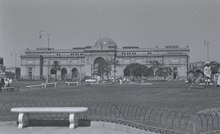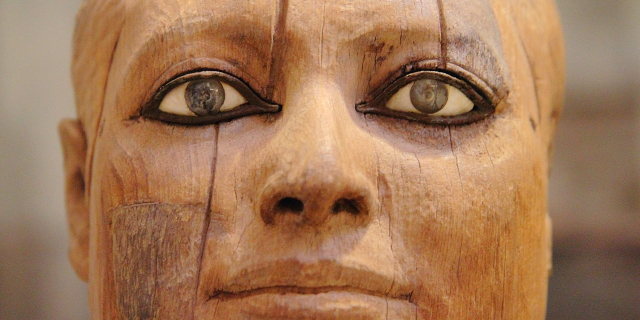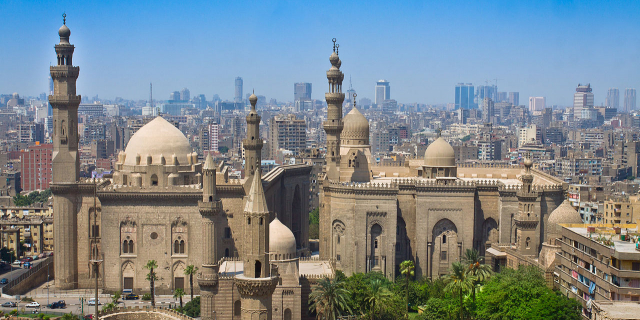المتحف المصري
( Egyptian Museum )
The Museum of Egyptian Antiquities, commonly known as the Egyptian Museum (Arabic: المتحف المصري, romanized: al-Matḥaf al-Miṣrī, Egyptian Arabic: el-Matḥaf el-Maṣri [elˈmætħæf elˈmɑsˤɾi]) (also called the Cairo Museum), located in Cairo, Egypt, houses the largest collection of Egyptian antiquities in the world. It houses over 120,000 items, with a representative amount on display. Located in Tahrir Square in a building built in 1901, it is the largest museum in Africa. Among its masterpieces are Pharaoh Tutankhamun's treasure, including its iconic gold burial mask, widely considered one of the best-known w...Read more
The Museum of Egyptian Antiquities, commonly known as the Egyptian Museum (Arabic: المتحف المصري, romanized: al-Matḥaf al-Miṣrī, Egyptian Arabic: el-Matḥaf el-Maṣri [elˈmætħæf elˈmɑsˤɾi]) (also called the Cairo Museum), located in Cairo, Egypt, houses the largest collection of Egyptian antiquities in the world. It houses over 120,000 items, with a representative amount on display. Located in Tahrir Square in a building built in 1901, it is the largest museum in Africa. Among its masterpieces are Pharaoh Tutankhamun's treasure, including its iconic gold burial mask, widely considered one of the best-known works of art in the world and a prominent symbol of ancient Egypt.
 Aerial view 1904 from a balloon where the Egyptian Museum appears to the right side.
Aerial view 1904 from a balloon where the Egyptian Museum appears to the right side. The Egyptian Museum in the 1950s.
The Egyptian Museum in the 1950s.The Egyptian Museum of Antiquities contains many important pieces of ancient Egyptian history. It houses the world's largest collection of Pharaonic antiquities. The Egyptian government established the museum built in 1835 near the Ezbekieh Garden and later moved to the Cairo Citadel. In 1855, Archduke Maximilian of Austria was given all of the artifacts by the Egyptian government; these are now in the Kunsthistorisches Museum, Vienna.
A new museum was established at Boulaq in 1858 in a former warehouse, following the foundation of the new Antiquities Department under the direction of Auguste Mariette. The building lay on the bank of the Nile River, and in 1878 it suffered significant damage owing to the flooding of the Nile River. In 1891, the collections were moved to a former royal palace, in the Giza district of Cairo.[1] They remained there until 1902 when they were moved again to the current museum in Tahrir Square, built by the Italian company of Giuseppe Garozzo and Francesco Zaffrani to a design by the French architect Marcel Dourgnon.[2]
In 2004, the museum appointed Wafaa El Saddik as the first female director general.[3]
During the Egyptian Revolution of 2011, the museum was broken into, and two mummies were destroyed.[4][5] Several artifacts were also shown to have been damaged and around 50 objects were stolen.[6][7] Since then, 25 objects have been found. Those that were restored were put on display in September 2013 in an exhibition entitled "Damaged and Restored". Among the displayed artifacts were two statues of King Tutankhamun made of cedar wood and covered with gold, a statue of King Akhenaten, ushabti statues that belonged to the Nubian kings, a mummy of a child, and a small polychrome glass vase.[8]
The museum was reportedly used as a torture site during the 2011 Revolution, with protestors forcibly and unlawfully detained and allegedly abused, according to reports, videos and eyewitness accounts.[9] Activists state that "men were being tortured with electric shocks, whips and wires," and "women were tied to fences and trees." Prominent singer and activist Ramy Essam was among those detained and tortured at the museum.[10]
Sale room for antiquitiesThe Department of Antiquities (Service d'Antiquités Egyptien) operated a sale room (Salle de ventes) in the Egyptian Museum in Cairo from 1902 in room 56 on the ground floor, where original ancient Egyptian artworks and other original artefacts were sold. In addition, until the 1970s, dealers or collectors could bring antiquities to the Cairo Museum for inspection on Thursdays, and if museum officials had no objections, they could pack them in ready-made boxes, have them sealed and cleared for export. Many objects now held in private collections or public museums originated here. After years of debate about the strategy for selling the antiquities, the sale room was closed in November 1979.[11]





























Add new comment